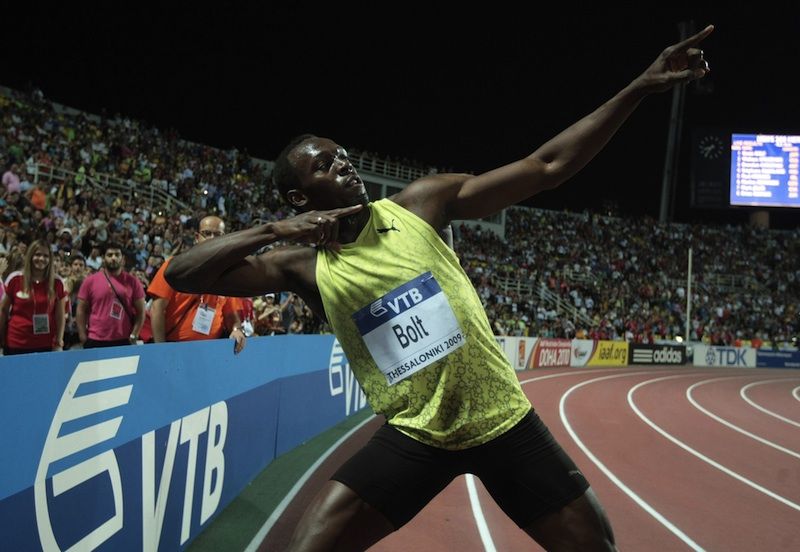Olympic Speed: Why Record-Breaker Usain Bolt Is So Fast

On Sunday, Jamaican sprinter Usain Bolt is set to race for the gold in the event where he holds both the world and Olympic records: The 100-meter sprint.
Bolt's name is apt. The 25-year-old athlete is almost unbelievably fast. At the 2008 Olympics in Beijing, the three-time gold medalist dashed this event in just 9.69 seconds, and at the 2009 World Championships in Berlin, he shaved a tenth of a second off this time, setting a new world record of 9.58 seconds.
The secret to Bolt's speed lies in his height and his strength, according to Massachusetts Institute of Technology mechanical engineer Anette Hosoi.
"Usain Bolt is unique in that somehow, he is able to both get top acceleration and maintain top speed," Hosoi said, in an interview with the National Science Foundation (NSF). At 6 feet 5 inches tall (196 centimeters), Bolt is taller than his competition on the track. His long legs enable him to glide farther with every step. The 100-meter dash takes most sprinters an average of 44 steps to run. Bolt has to take only 41. [Video: The Secret of Usain Bolt's Speed]
But along with Bolt's extra height, he also has more mass to move than other sprinters. To do this, he needs strength, which means lots of time in the weight room. The final ingredient, said Stanford University engineer Samuel Hamner, is coordination.
"If you're off by a few milliseconds when you're generating these forces [during a race], you'll fall over or you'll injure yourself," Hamner told the NSF. "So it takes precise timing of the electrical signal that comes from your brain to your muscle to create that force."
Bolt has strong competition for the title of fastest man in the world this year, because fellow countryman Yohan Blake won both the 100- and 200-meter races at the Jamaican Olympic trials. His personal best in the 100-meter sprint is 9.75 seconds.
Sign up for the Live Science daily newsletter now
Get the world’s most fascinating discoveries delivered straight to your inbox.
As for Bolt, he credits his strength and long legs for his amazing performance on the track.
"I just want to wow people," he told the NSF.
Follow Stephanie Pappas on Twitter @sipappas or LiveScience @livescience. We're also on Facebook & Google+.

Stephanie Pappas is a contributing writer for Live Science, covering topics ranging from geoscience to archaeology to the human brain and behavior. She was previously a senior writer for Live Science but is now a freelancer based in Denver, Colorado, and regularly contributes to Scientific American and The Monitor, the monthly magazine of the American Psychological Association. Stephanie received a bachelor's degree in psychology from the University of South Carolina and a graduate certificate in science communication from the University of California, Santa Cruz.










